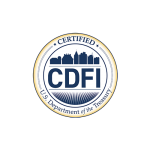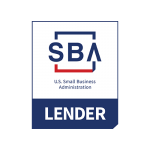
Home Equity Line of Credit or a HELOC, is a revolving line of credit based upon the equity you have in your home. HELOCs are a great way to leverage your home equity and can be a great option for many people.
HELOCs are different than a standard home equity loan. If you are seeking to obtain credit, it is important to understand the differences. Although both loans borrow against your existing home equity, the loans are structured differently and have a different pay back and interest schedule
Advantages
A standard home equity loan typically gives you a sum of money all at once. These loans typically carry a fixed interest rate, which means the payment is the same each month. This makes them easier to factor into your budget. Since it’s a lump-sum equity draw, a home equity loan is a good source of money for major projects and one-time expenses.
Advantages of a home equity loan are they come with a fixed interest rate and monthly payments that won’t change over the course of a set pay-back period. However, tapping all the equity in our home at one time, can work against you, if your property values in your area decline.
The advantages of a home equity lines of credit or HELOC is that you pay interest compounded only on the amount you draw, not the total equity available in your credit line. These loans also offer the flexibility of interest-only payments during the draw period.
If you are thinking about applying for a HELOC or a home equity loan, consider how much money you really need and how you plan to use it. Factor in interest rates, fees, monthly payments and tax advantages as you weigh your options.
If you want access to a large sum of money — without taking out a traditional bank loan — a home equity line of credit (HELOC) may be just what you’re looking for. Depending on how much equity you have in your home, it may be the perfect way to get the cash you need in a relatively short period of time. Here is a list of considerations that may guide you.

Main advantages of a home equity line of credit
You only pay when you use it. With a HELOC, you’re not taking a set amount of cash out of your home. You’re setting it up as a maximum drawable balance, and if you always left the balance at zero, your payment would be zero. This makes a HELOC a flexible tool to have cash available only when needed. When you do use it, you’ll start getting a monthly statement and the payment will be calculated on the outstanding balance.
Low Interest Rate Since you’re putting your home up as collateral, the interest rate of a HELOC is lower than other options, such as a personal loan. Be aware that you could risk losing your home if you default, but as long as you stay current on payments, you’ll benefit from the lower rate.
Interest-only payment. You have the ability to opt for interest only payments. This allows you to access funds with a smaller monthly obligation. Just make sure you know how long you are able to do this. For example, if you don’t repay your line of credit within a certain number of years, your lender could convert it to a traditional loan.
Low Closing Costs When compared to other products, such as a home equity loan, the closing costs are much lower. In fact, depending on the bank, there may not be any closing costs associated with the line of credit.
Investing in a new home. A HELOC is a great tool to access equity in your existing home to buy or put a down payment on a new home or investment property. Because you only pay on the HELOC when you use it, you can leave the HELOC at a zero balance while you shop for homes, and only use the HELOC funds (and therefore start paying interest and a monthly payment) when you find a home to buy.
Home improvements. Likewise, if you were remodeling slowly over time, you wouldn’t want to pay for use of all of those funds from day one. For example, maybe you were going to redo your kitchen for $25,000, then wait a year before redoing your bathrooms for another $25,000. With a traditional home loan — like a cash-out refinance of your first mortgage — you’d start paying the interest and payments on $50,000 as of day one. With a HELOC, you would use $25,000 for the kitchen, and wouldn’t add another $25,000 to the balance and payment until a year later. This would save you about $100 per month in interest for that year.
Large purchase like a car or appliances. If you plan to finance a large purchase like this, you should compare financing costs with HELOC costs. Often a HELOC will prove to be a competitive option for a purchase like this.
“Fixed-rate advance” aka “fixed-rate draw” option. HELOCs are adjustable-rate loans but they also have a feature that allows you to fix a portion of the drawn amount. This means if you were going to remodel, or buy a car or appliance, you could do so by fixing that portion of your HELOC draw. This is a good option if you know you’re not going to repay that sum for a longer period of time.
No Requirement to Use the Funds A home equity loan is used in the same manner as a credit card. You borrow money when you need it and repay it according to the terms and conditions of your agreement. You can then borrow the funds again in the future. However, there’s no requirement to use the funds. If you have no need for the money, you can simply leave the line of credit open for future use.
Tax Advantages There are many variables that come into play, but you may be able to deduct the interest paid on your home equity line of credit. This isn’t the only reason to opt for a HELOC, but it’s another benefit to keep in mind. Before signing on the dotted line, contact your tax professional to discuss the tax advantages of a home equity line of credit.
Use the Funds However You Please There are no restrictions as to how you can use the funds from a HELOC. Maybe you need the money to complete a home renovation project. Or perhaps you’re tackling education expenses with it. The choice is yours.

Main disadvantages of a home equity line of credit
As with any other type of mortgage, your home serves as collateral for the loan. This means that if you fail to comply with the terms of your loan, your loan could default, which could lead to foreclosure. You should also be prepared for the required payment of your loan to increase from interest-only payments to interest-plus-principal payments after your draw period ends. Many HELOCs may also include a balloon payment to pay off the loan.
Rates are adjustable. HELOCs are adjustable-rate loans. For the past 20 years, the Prime Rate peaked at 9.5 percent and averaged 5.39 percent. A common HELOC rate has been 6.39 percent over the past 20 years. This is competitive compared to fixed-rate cash-out loan alternatives. If the Prime Rate rises, HELOC rates will rise as well, so you might be better off getting a fixed-rate loan now, before that happens. Ask your HELOC lender to compare cash-out loan options for you.
Payments can be higher. Many HELOCs will require a fully amortized payment, and this amortization period is often 20 years. If you compared this with a traditional cash-out refinance of a first mortgage, which would typically amortize over 30 years, the HELOC payment will be meaningfully higher. Don’t assume a HELOC payment is going to be lower. You must compare options first.
A HELOC is not a cash card Because a HELOC behaves a lot like a credit card in that you can draw from it as needed, it’s tempting to use it for every day needs such as: groceries, clothes, vacations, etc. But doing so depletes your home equity, and if you’re treating your home like a long-term investment, then using home equity to pay for short-term items isn’t going to meet your objectives.
HELOC interest-only payments can be risky During your draw period, which can last up to 10 years, you may be allowed to make interest-only payments on the amount you borrow. However, when this period expires, you will be responsible for paying principal and interest, in addition to a possible balloon payment at the end of the loan term. You will need to prepare for these expected increases.
The credit line could change If your credit score or the value of your home declines, your lender could reduce the amount of your credit line or freeze your HELOC. Having the rug pulled from under you could upset your financial plans.
Final Thoughts
A home equity line of credit isn’t the right choice for everyone, but the benefits above illustrate why so many people consider it a top option when in need of money. Before you act, contact your bank and ask for more information on its HELOC products, and compare the pros and cons. You may find that it’s the perfect option for someone in your shoes. Terms and characteristics of home equity loans and lines of credit vary from one lender to another. Be sure you understand the repayment terms of your loan before you commit to a lender, and don’t be afraid to shop around.





